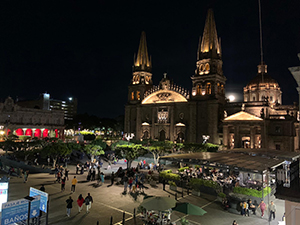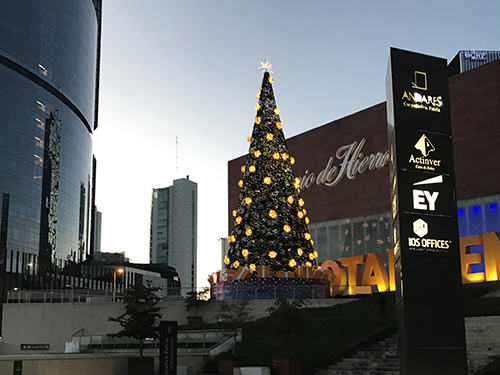Introduction:
Over January term, I spent two weeks at Tecnológico de Monterrey in Guadalajara, Mexico studying the Americanization of Mexico. I had the opportunity to see social issues firsthand, hear from representatives from American corporations in Mexico, and above all experience Mexican culture. Through this experience and research, I was able to tie together my love of advertising, culture, and Spanish language by creating this analysis of international branding in the Mexican market. Check out a short synopsis of what I learned about advertising in “Global Actors on the Local Stage: The Procter and Gamble model of Constructing an International Brand identity that Works,” or download the full paper below.

Overview:

Cultural knowledge is the centerpiece of successful global brand integration at the local level. The type of brand an international corporation has the opportunity to create and that brand’s success in the Mexican market is firmly rooted in its integration with local buying practices, consumer cultures, and perceptions.

Within these broad categories, the importance of the local market conditions, consumer buying practices, adaptation to local culture, expectations, trust, access, and cultural sensitivity show just how complex the creation of a global brand that functions as a local brand becomes.
A great example of the integration of consumer factors to create a successful brand is found in the process of Procter and Gamble bringing Pantene shampoo to Mexico. In this paper, I explore the intersection of culture and consumer behavior in brand perception through the study of Procter and Gamble’s success with bringing Pantene shampoo to an already highly saturated market. Here’s what international brands can learn from Procter and Gamble, an American corporation that has been successful in entering the Mexican market. I’ll dive into all of these concepts and more in the full analysis.
Key Takeaways for Advertising:
Know what you’re up against- not only the market conditions, but thoughts, feelings, and practices associated with the product category.
Know your own brand and existing perceptions. Mexico is increasingly open to American and European goods, seeing them as a sign of status; however, brands that appeal to tradition and local culture hold a special affinity to the consumer.
How a local consumer buys is just as important as what they buy. In Mexico, small, poorly lit local convenience stores are the norm for everyday shopping. Consumers must ask for a product by name, presenting a challenge for point of sales decisions. Brand loyalty is the best way to make a sale.
Brands in Mexico should emphasize personal connections, quality, value, and time saving. There is an interesting dynamic between the traditional, relaxed and family-oriented way of life and the newer, faster, and more Americanized lifestyle, especially in urban areas. A brand has the choice to choose between these two identities or embrace a mix of global and local positioning.
Although Mexico is an emerging economy, income disparity is still greatly evident in class distinctions. If your target market is low to middle class consumers, avoid imposing unrealistic American lifestyle standards in the brand identity.
And finally, “Think Globally, Act Locally” (Llonch-Andreu, Joan, et. All 438). Although a cliché phrase, it is truly important to be a part of the local market to understand the needs and therefore create the most competitive brand. However, understanding how to leverage a brand’s globality to your benefit is also important as globality drives intrigue.
